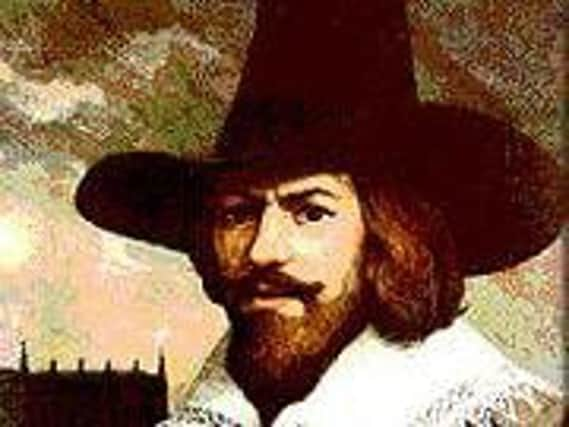Heritage: Gunpowder Plot trial for Yorkshire's Guy Fawkes 410 years ago this week


On 27 January 1606, Westminster Hall was crowded as spectators listened to the speech of the Attorney General, Sir Edward Coke, who described the punishment for the traitors. They were all condemned to death for treason - at the venue which they had intended to blow up. The details of the punishments were brutal and gruesome.
Rather than suffer the sickening outcome intended the following day, Fawkes jumped from the gallows, breaking his own neck, and avoided being cut down while still alive. His lifeless body was then hacked into quarters and sent to the four corners of the kingdom as a warning to others.
Advertisement
Hide AdAdvertisement
Hide AdThe plot had been formulated in the wake of political and religious tension. The first meeting of the plotters, who were against the Protestant establishment, had been the previous May.
They discussed a plan to blow up Parliament House and assassinate James I, who had publicly expressed hostility against Catholics - but it was to end in failure. James I had become the king after the death of his cousin, Elizabeth I. Unlike Catholics who were loyal to the Crown, the plotters wanted to trigger what they believed would be a popular uprising.
Originally from York, Fawkes had been recruited in Spanish-ruled Flanders, where he had been serving in the Spanish Army. There were tensions between Protestant England and Catholic Spain. Fawkes was brought in as a gunpowder expert. He also opposed talk of union with Scots; which had been suggested by James I, who was the son of a Scotswoman, Mary Queen of Scots.
The plotters wanted to dig a tunnel and blow up Parliament House in November but, on the fateful night when it was supposed to take place, Westminster was searched after an investigation was launched. A suspiciously large amount of firewood was found. Fawkes was caught in the basement storeroom under the House of Lords with barrels of gunpowder and was arrested.
Advertisement
Hide AdAdvertisement
Hide AdThe king sent an order to the Tower of London, authorising the torture of Fawkes, who had initially refused to divulge the names of his co-conspirators. The effect of torture upon Fawkes was evident later from a confession on 9 November where his signature is barely legible.
After the punishments were outlined at the Gunpowder Trial, the men in question soon suffered their grisly endings. Fawkes - along with Thomas Winter, Ambrose Rookwood and Robert Keyes - died just outside Westminster Hall, in Old Palace Yard, the following day.
The heads of the two ringleaders, Thomas Percy and Robert Catesby, who had been killed earlier at Holbeach House in Staffordshire, were set up on the Parliament House.
There were 13 plotters - and it was an unlucky 13 for British Catholics. New laws were passed to prevent Catholics from practising law, serving as officers in the Army or Navy, or voting in local or Parliamentary elections. It was not until 1829 - which was 223 years later - that they were again allowed to vote.
Five things you might not know about Guy Fawkes
Advertisement
Hide AdAdvertisement
Hide Ad1. He was educated at St Peter’s School in York, which is still around today as a respected public school
2. Fawkes was 21 when he left England to serve in Spain’s Army of Flanders and fight protestant rebels
3. While he was in Europe, Fawkes change his first name to Guido - the Italian variant of Guy
4. Fawkes withstood two days of torture, including the rack, before confessing to his crimes
5. It was in the 19th century that his effigy was placed on bonfires to commemorate failure of the plot